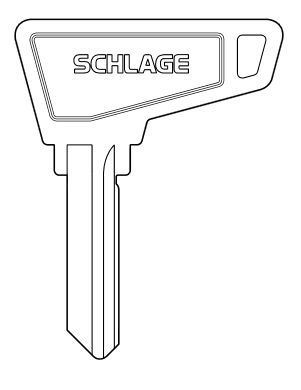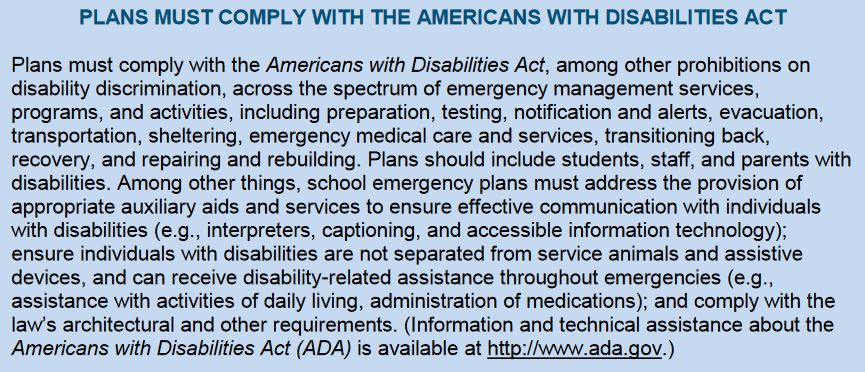 Several people have asked me recently what the Americans with Disabilities Act says about keys. Although the ADA standards address operable parts of locks – like thumbturns, keypads, turn-buttons, and of course, lever handles, keys are not covered by the ADA.
Several people have asked me recently what the Americans with Disabilities Act says about keys. Although the ADA standards address operable parts of locks – like thumbturns, keypads, turn-buttons, and of course, lever handles, keys are not covered by the ADA.
The ADA requires door and gate hardware (including “handles, pulls, latches, and locks and other operable parts”) to be mounted between 34 inches and 48 inches maximum above the floor or ground, and to comply with section 309.4:
309.4 Operation. Operable parts shall be operable with one hand and shall not require tight grasping, pinching, or twisting of the wrist. The force required to activate operable parts shall be 5 pounds (22.2 N) maximum.
While there are some key blanks with extended bows which can be easier to use and some local codes or standards that may require them, this type of key does not meet the operational requirements of no tight grasping, pinching, or twisting. The question of keys is answered in the US Access Board’s online guide to the ADA:
Are turn-key locks prohibited by the standards?
Key locks or key cards are not prohibited by the standards which apply only to the fixed portions of operable parts. Similarly, items dispensed by ATMs and fare machines, such as receipts, cash, fare cards, and vending machine products are not covered by the standards.
So only permanently-attached parts of the hardware are covered by the ADA standards, and devices which are not permanently attached are not covered, which brings up a very interesting issue with regard to classroom barricade devices. The code change approved in Ohio to allow classroom barricade devices specifically requires temporary door locking devices which are not permanently mounted to the door (with an exception for “individual parts of the temporary door locking device assembly such as bolts, stops, brackets, pins, etc. that do not prevent normal ingress and egress through the door may be permanently mounted…”).
Since most classroom barricade devices do not meet the ADA standards, was the Ohio code language written to ensure that the ADA doesn’t apply? How can that be, when according to the FBI’s Guide for Developing High Quality School Emergency Operations Plans, these plans must comply with the ADA?
Anybody else see a problem here?
You need to login or register to bookmark/favorite this content.






The whole purpose of a turn-key lock is to deny access to people who have not made arrangements to receive such access, whereas a typical door latch should be operable by anyone without such prior arrangement. As such, I would think that the ADA would not require that all door locks be operable by people with every imaginable physical limitation, but rather that facilities endeavor to provide accommodation upon request for people who are given access. I would expect that for many kinds of door handle, it would not be too hard to design a (possibly bulky) device into which a key could be installed, and which when slipped over the handle would allow someone to open the door by pushing a plunger; I would think that having a few such devices available for people who needed them should meet ADA requirements at a much lower cost than that of replacing all the turn-key locks in a facility.
Hi John,
When you say “I would think that the ADA would not require that all door locks be operable by people with every imaginable physical limitation”. You are correct they do not required that all door locks be operable by people with every imaginable physical limitation. Per the ADA cited by Lori below in 309.4 Operation, the ADA lays out specifically the procedure for operation and forces allowed. An individual with a disability needs to have the ability to meet the operable parts requirements. The basis of the disability design criteria is to make the built environment easier to access and use by individuals with disabilities regardless of the manifestation. To a large degree the criteria does tend to make the built environment easier and safe to use.
309.4 Operation. Operable parts shall be operable with one hand and shall not require tight grasping, pinching, or twisting of the wrist. The force required to activate operable parts shall be 5 pounds (22.2 N) maximum.